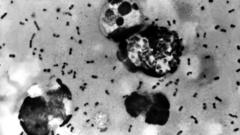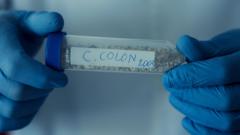#### The research highlights the significance of ancient DNA analysis in understanding the origins and patterns of human diseases.
### Unearthing Ancient Ailments: The Genetic Legacy of Human Diseases

### Unearthing Ancient Ailments: The Genetic Legacy of Human Diseases
#### A comprehensive new study unveils the historical evolution of 214 diseases spanning 37,000 years across Europe and Asia.
The quest to understand past pandemics has taken a significant leap forward, as scientists unveil a groundbreaking genetic study chronicling the history of 214 human diseases. Over the last century, humanity has faced an array of novel pathogens, from H.I.V. to SARS-CoV-2, prompting a renewed interest in our historical health crises.
Despite the rich accounts of ancient plagues, such as Thucydides' descriptions of the devastating Athenian plague around 430 B.C., scientists have struggled to pinpoint the exact pathogens responsible. Recent advances in genetic research are beginning to change that narrative, with a new study providing a vast timeline of ancient diseases based on the analysis of DNA preserved in human fossils.
On Wednesday, researchers shared their findings from a comprehensive examination of 1,313 ancient human remains, revealing the emergence and evolution of various diseases over the last 37,000 years. “The paper is large and sweeping and overall pretty cool,” remarked Hendrik Poinar, an expert in ancient DNA from McMaster University who was not involved in the research.
The project not only extends the timeline of certain diseases, but it also tracks the fluctuations in disease prevalence over centuries. Among the oldest remains investigated were those of hunter-gatherers, who harbored a range of pathogens including hepatitis B, herpes virus, and Helicobacter pylori, illustrating the complexity of our ancestral health landscape.
These findings are crucial steps towards understanding how ancient pathogens shaped human health and could provide insights into preparing for future epidemics. With advancements in genetic technology, researchers are better equipped to analyze and interpret the historical implications of diseases that have long shaped human civilization.
Despite the rich accounts of ancient plagues, such as Thucydides' descriptions of the devastating Athenian plague around 430 B.C., scientists have struggled to pinpoint the exact pathogens responsible. Recent advances in genetic research are beginning to change that narrative, with a new study providing a vast timeline of ancient diseases based on the analysis of DNA preserved in human fossils.
On Wednesday, researchers shared their findings from a comprehensive examination of 1,313 ancient human remains, revealing the emergence and evolution of various diseases over the last 37,000 years. “The paper is large and sweeping and overall pretty cool,” remarked Hendrik Poinar, an expert in ancient DNA from McMaster University who was not involved in the research.
The project not only extends the timeline of certain diseases, but it also tracks the fluctuations in disease prevalence over centuries. Among the oldest remains investigated were those of hunter-gatherers, who harbored a range of pathogens including hepatitis B, herpes virus, and Helicobacter pylori, illustrating the complexity of our ancestral health landscape.
These findings are crucial steps towards understanding how ancient pathogens shaped human health and could provide insights into preparing for future epidemics. With advancements in genetic technology, researchers are better equipped to analyze and interpret the historical implications of diseases that have long shaped human civilization.














